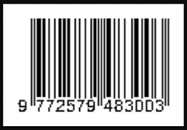PENGEMBANGAN SPATIAL THINKING ON MAP TEST (STMT) UNTUK TINGKAT SMA
DOI:
https://doi.org/10.32550/teknodik.v21i3.345Keywords:
Berpikir Spasial, Spatial Thinking on Map Test (STMT), Kualitas SoalAbstract
Abstrak: Soal berpikir spasial yang fokus pada interpretasi peta belum banyak dibuat. Penelitian ini bertujuan untuk mengembangkan soal berpikir spasial model Spatial Thinking on Map Test (STMT). Metode Penelitian menggunakan desain penelitian pengembangan Adams & Wieman. STMT terdiri dari 8 soal. STMT diuji cobakan pada 28 siswa SMA Kelas 10 di SMA Negeri 1 Cawas, Kabupaten Klaten. Data yang didapat kemudian dianalisis dengan SPSS 24.0. Hasil penelitian menunjukkan nilai reliabilitas soal setelah diuji dengan Cronbach’s Alpha sebesar 0,741. Nilai ini termasuk kategori soal yang reliabel. Sedangkan nilai validitas soal nomor 1 sebesar 0,735; nomor 2 sebesar 0,722; soal nomor 3 0,682; soal nomor 4 sebesar 0,669; soal nomor 5 sebesar 0,703; soal nomor 6 sebesar; soal nomor 7 sebesar; dan soal nomor 8 sebesar 0,733. Nilai dari soal nomor 1 sampai 8 tersebut termasuk kategori valid. Berdasarkan hasil uji reliabilitas dan validitas tersebut soal STMT yang dibuat layak digunakan untuk mengukur keterampilan berpikir spasial siswa.
References
Adams, W.K., & Wieman, C.E. 2010. Development and Validation of Instruments to Measure Learning of Expert-Like Thinking. International Journal of Science Education. Hal.1-24.
Assosiation of American Geographers. 2008. Introducing Spatial Thinking Skills Across The Curriculum. (Online). http://www.aag.org/galleries/tgmg-files/spatial_thinking_history_lesson.pdf. Diakses pada 25 Februari 2017.
Bednarz, S. W., Heffron, S., & Huynh, N. T. 2013. A road map for 21st century geography education: Geography education research. Research document. Geography Education Research Committee of the Road Map for 21st Century Geography Education Project. National Geographic Society.
Berendt, B., Rauh, R., & Barkowsky, T. 1998. Spatial Thinking with Geographic Maps: An Empirical Study. (Online) http://cindy.informatik.uni-bremen.de/cosy/staff/barkowsky/publications/Berendt_et_al_98b.pdf Diakses 5 Juni 2017.
Badan Informasi Geospasial. 2015. Peta Representasi Spatial Thinking Dari Sudut Pandang Implementasi Informasi Geospasial. (Online) http://www.bakosurtanal.go.id/berita-surta/show/peta-representasi-spatial-thinking-dari-sudut-pandang-implementasi-informasi-geospasial Diakses 25 Februari 2017
Carswell, R. J. B. 1971. The role of the user in the map communication process: Children’s abilities in topographic map reading. Cartographica: The International Journal for Geographic Information and Geovisualization 8 (2): 40–45.
Gilmartin, P. P., and J. C. Patton. 1984. Comparing the sexes on spatial abilities: Map-use skills, Annals of the Association of American Geographers 74 (4): 605–619.
Holt-Jensen, Arild. 2009. Geography History and Concepts: A Student’s Guide 4th Eds. London: SAGE.
Ishikawa, T., & Kastens, K.A. 2005. Why some students have trouble with maps and other spatial representations. Journal of Geoscience Education, 53(2), 184-197.
Kastens, K.A. 2001. Why some students have trouble with maps & spatial representations: An on-line tutorial for geoscience faculty. Proposal to the NSF Awards to Facilitate Geoscience Education Program. (Online) https://www.nsf.gov/awardsearch/showAward?AWD_ID=0122001 Diakses pada 14 Juli 2017.
Kerski, J.J. 2003. The Implementation and Effectiveness of Geographic Information Systems Technology and Methods in Secondary Education, Joournal of Geography 102: 128-137.
Lee, J., & R. Bednarz. 2011. Components of Spatial Thinking: Evidence from a
Spatial Thinking Ability Test. Journal of Geography, vol.111:1, 15-26.
Metoyer, S.K., Bednarz, S.W., & Bednarz, R.S. 2015. Spatial Thinking in Education: Concepts, Development, and Assessment. In Solari, Demirci, & van der Schee. Geospatial Technologies and Geography Education in a Changing World. Tokyo: Springer
Monmonier, M. 1996. How to lie with maps (2nd ed.). Chicago: University of Chicago Press.
National Research Council. 2006. Learning to Think Spatially: GIS as a Support System in K–12 education. Washington, D.C.: National Academies Press
Purwanto, E. 2005. Evaluasi Proses dan Hasil dalam Pembelajaran. Malang: UM Press.
Sistem Tata Ruang Kabupaten Klaten. (Online) http://www.simtaru.klatenkab.go.id, diakses 10 Februari 2017.
Sugiono. 2016. Metode Penelitian Pendidikan Pendekatan Kuantitatif, Kualitatif, dan R&D. Bandung: Alfabeta
Thrift, N. 2009. Space: The fundamental Stuff of geography. In Key Concept in Geography. Clifford, N.J., Holloway, S.L., Rice, S.P, & Valentine, G. London: SAGE
Downloads
Published
How to Cite
Issue
Section
Citation Check
License
Please download and complete the Form, Copyright Transfer, and Ethics Statement Form. The following is provided at the time of submitting the text (Upload Additional Files):









